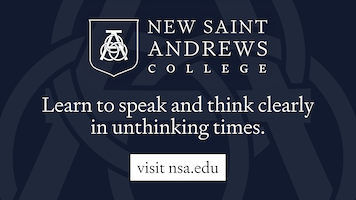This morning, the House Revenue and Tax Committee voted 8-7 to send House Bill 93, the parental choice tax credit, to the floor with a recommendation that it pass. This came after nearly two hours of testimony and debate.
If you’ve seen just one hearing on school choice in Idaho, you already know what was said. Retired teachers and public education boosters urged the committee to reject the bill, lest it be the end of public education as we know it. Parents urged the committee to support it, to give them and their communities access to alternatives. Democrats and a few Republicans such as Rep. Britt Raybould argued strenuously against allowing tax dollars to go to private institutions without government control, while other Republicans such as Rep. Jason Monks argued that parents are ultimately accountable for the education of their own children.
Feel free to watch the whole debate here:
I analyzed H93 on Monday, explaining why I believe conservatives can comfortably support this legislation. It’s not everything we want, but it’s a good start, and is structured in such a way as to allow expansion in the future should enough families demand it.
However, the deeper issue here is not the size of a refundable tax credit, but what to do about the public education system as a whole. To listen to the public school boosters this morning, you would think that our schools are world class, ensuring that all students finish each year fully proficient in the subject they studied. Yet if that were the case, then there would not be so much demand for alternatives.
Matt Edwards had a good and healthy rant on the subject on Idaho Signal this morning:
Just like federal programs that were started in the 1930s to deal with issues of the time, our public school system is a relic of a past epoch, and simply dumping more money into it will not fix the structural problems that have developed. We need to think outside the box if we’re going to truly educate a generation of children who will, as our state constitution says, maintain our republican form of government.
I believe that those who have lived their entire lives within the public school system — teachers, administrators, bureaucrats, etc. — have the hardest time stepping outside of that box and considering new ideas. Supporters of the current system such as former representative Julie Yamamoto or Sen. Dave Lent only support solutions that leave the current system intact, making no more than minor changes at the margins. Yet now is not the time for timidity, but bold and new ideas.
It’s been inspiring watching what President Donald Trump is doing in Washington, DC right now. Rather than nibbling around the edges, as past Republican presidents have done, Trump is taking a sledgehammer to the old and decrepit edifice of the administrative state. Entire generations of Republicans have been too fearful to touch deep state bureaucracies within the Dept. of Education or USAID for fear of upsetting the patronage networks that have infested DC like parasites since the time of Franklin Roosevelt.
The lesson of the first few weeks of the second Trump Administration is you can just do things. Just because things have “always” been done a certain way doesn’t mean we can’t try something new. Public school boosters still allege that public schools are “underfunded” despite record-breaking appropriations every single year, demanding ever more of your money despite no ability to actually improve student outcomes. During her presentation, Rep. Wendy Horman said:
In the ten years that I’ve been serving on the Joint Finance-Appropriations Committee, the public school budget has gone from $1.4 billion to over $2.8 billion, a 100% increase in ten years, during a time period when public school students have only increased by 8%.
Yet student achievement has flatlined, with only 30-40% of Idaho students testing as proficient for their grade level.
More money is not going to fix the structural problems within public education. It’s become too burdened with administrative bloat as well as organizations such as teacher unions that are more concerned with extracting resources from the system than with student achievement. It is no surprise that bureaucrats, administrators, and unions are especially interested in preserving the current system — it’s working just fine for them.
This whole situation reminds me of the history of our space program. The National Aeronautics and Space Administration (NASA) was created in 1958, during the Cold War missile race with the Soviet Union. In 1962, President John Kennedy set a goal of reaching the moon by the end of the decade. At that time, NASA was full of brilliant and ambitious young men who worked together as a team to achieve a shared goal. Neil Armstrong walked on the moon in July 1969, a triumph not only for the agency but for America as well.
Today, NASA is a bloated beast, another pulsating pustule of the administrative state. In 2010, then NASA administrator Charles Bolden raised eyebrows when he said the organization’s top priority was outreach to Muslims. When the 30-year-old Space Shuttle program was finally retired in 2011, NASA began development of the Space Launch System (SLS), a modern spacecraft that could transport astronauts to the space station, the moon, and beyond. Fourteen years later, SLS has completed just a single unmanned test flight.
Manufacturers and defense contractors made out like bandits, however, which considering the unofficial nickname for SLS — the Senate Launch System — shows that the purpose of a system is what it does.
During that same time period, SpaceX has turned its Falcon 9 rocket into an inexpensive and reusable space vehicle that has delivered hundreds of payloads into orbit, including several round trips for astronauts to the space station. If not for SpaceX, NASA would still be dependent upon Russia to ferry astronauts to space and back.
While NASA still engages in some interesting projects, we are definitely not getting the same bang for our buck as we were in the 1960s. A leaner and more ambitious organization like SpaceX gives us much more value for our money, which means we are better off having NASA outsource spaceflight to the private sector rather than continuing to waste money on spacecraft that will never fly.
Apply the same lessons to the public school system. Allowing parents to redirect up to $5,000 in public funds to private institutions of their choice will likely yield better results than continuing to subsidize a failing public school system. Rather than spending over $9,000 per student — much of which funds a bloated administration, parasitical groups such as the teacher unions, and programs that not only contradict traditional values but also fail to teach basic skills — parents could allocate those resources far more effectively. As many have pointed out, education should not be a one-size-fits-all system. Yet public school advocates, by consistently opposing school choice programs that let funding follow the student, implicitly support maintaining that rigid model.
It’s deeply ironic that Republicans — champions of the free market and opponents of central planning — have such trouble untangling themselves from the public school system, which bears all the hallmarks of socialism. We would never tolerate this level of central control over how we buy groceries or find a job, so why do we defend it when it comes to educating our children?
I’m not looking to destroy the public school system, but to save it. Reform is back on the menu in 2025. The Idaho Constitution requires our Legislature to fund a free and uniform system of public schools, and I believe that accomplishing that goal does not have to mean remaining chained to the current broken system. I believe it’s time to break out of the ossified paradigm that has constrained us for the past century and explore new ways to educate the next generation. The future of our state and our Republic depends on it.
Gem State Chronicle is a reader-supported publication. To receive new posts and support my work, consider becoming a free or paid subscriber.
About Brian Almon
Brian Almon is the Editor of the Gem State Chronicle. He also serves as Chairman of the District 14 Republican Party and is a trustee of the Eagle Public Library Board. He lives with his wife and five children in Eagle.













